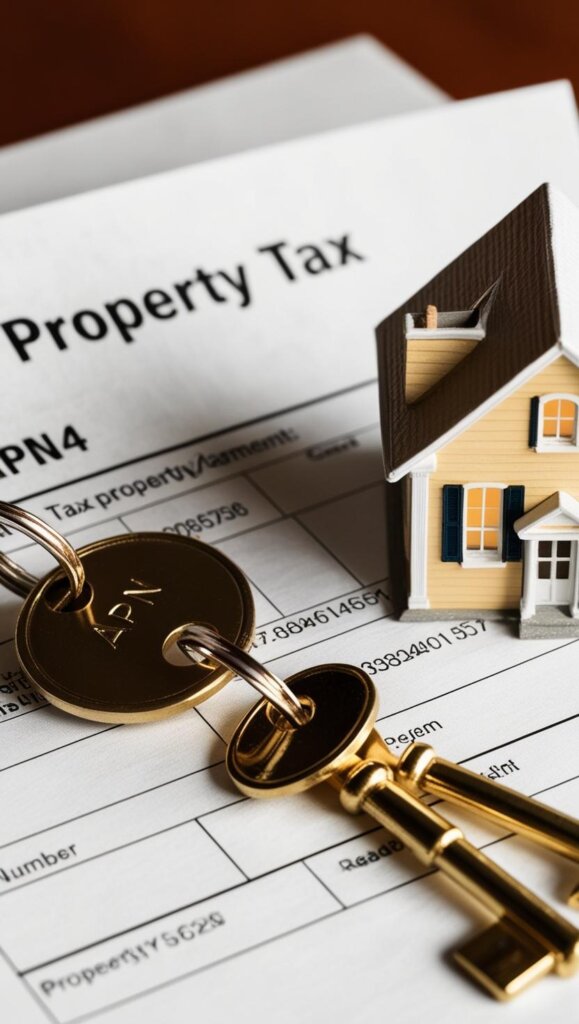Real estate is probably one of the few industries that are as diverse as humanity in terms of the products they offer. Not only are properties different in appearance and the area they are located but also in the way they are identified. This is where the APN number or the Assessor’s Parcel Number comes in. If you have come across this term while working on property taxes or land records and got a little bit confused, you are not alone. The following piece of writing aims at defining what an APN number is as well as why it is significant and how to find one.

What Exactly is an APN Number?
An APN, or Assessor’s Parcel Number, is a number assigned by the county tax assessor to each piece of land. Consider it as your property’s identification number or the thumb impression of your property that will always help you to tell the difference between one piece of land from the other in the county.
What is the APN and why would one need it?
The APN has its significance in real estate and is thus crucial in the real estate world. Here’s a closer look at what it’s used for:Here’s a closer look at what it’s used for:
Property Taxes: In order for the county to identify your property the county tax office uses the APN to help you pay the right amount of local property taxes.
Ownership Records: APNs are connected with property titles, transfers and liens, thus providing clear and efficient way of identifying owners. They assist you in finding land that has no street address and enable you to establish the value of land.
Zoning and Land Use: In local government, APNs are used in the administration of zoning and land use control.
Real Estate Transactions: From the process of searching title, applying for a mortgage or signing a sale agreement the APN is used to ensure that the right property is being referred to.
Legal Identification: These numbers are often mentioned in legal documents such as cases of ownership claims, to bar any ambiguity concerning the property in question.

Common Alternative Terms
APNs (Assessor’s Parcel Numbers) may have different names depending on the country or state. Common alternative terms include:Common alternative terms include:
Parcel Number
Tax Parcel Number
Property Identification Number (PIN)
Parcel Identification Number (PIN)
Property Tax ID
Tax Lot Number
Parcel ID
Tax ID Number
Section, Block, and Lot (SBL) – This is a commonly used system in New York.
Folio Number – It is used in states such as Florida.
Is APN the same as Tax ID? – The terminology varies by county and state. Some counties use Tax ID interchangeably with APN to identify property parcels.
How To Find Your Property’s APN Number?
If you are not quite sure where to look for it, the following are ways to identify your APN:If you are not quite sure where to look for it, the following are ways to identify your APN:
Check Your Property Tax Bill: You will find the APN print on your property tax statement, sometimes under the headings Parcel Number or APN.
Visit the County Assessor’s Website: Most of the counties have an option of an online property search. You can enter your address or name and the APN will be displayed.
Review Title Documents: When a property is being bought or refinanced, the title companies put the APN in the deed or the title report.
Contact the Assessor’s Office: In case the online tools are not accessible, a simple phone call, or a visit to the assessor’s office in your local area will give you the APN for your property.
Explore GIS Mapping Tools: Some of the counties have Geographic Information System or GIS in interactive maps that enable one to identify property boundaries and APNs.
Common APN Number Structure
An APN, or Assessor’s Parcel Number, is made up of digits and can look like XXX-YYY-ZZZ. However, the format of an APN may differ depending on the county and the following are some of the details that the numbers in an APN stand for.
Book or Map Number: Represents a specific map or section of the county’s parcel maps.
Example: The first 3 digits (e.g., 123-456-789) may refer to a geographical area.
Page or Block Number: Indicates a subdivision, block, or group of parcels within the map or section.
Example: The next set of digits (e.g., 123-456-789) identifies a smaller area within the section.
Parcel or Lot Number: Refers to the specific lot or property within the block or subdivision.
Example: The last digits (e.g., 123-456-789) uniquely identify the parcel.
Optional Suffix: Some counties include additional numbers or letters to indicate:
Ownership splits (e.g., “A” or “B” for divided parcels).
Zoning overlays or specific land use information.
Common Structure of Parcel Identification Numbers in Georgia
District Number: This segment identifies the tax district or geographic area within the county. It is often represented by one or two digits.
Land Lot Number: Denotes the specific land lot within the district. This can be a combination of numbers and letters, especially if there are subdivisions or map sheets involved.
Parcel Number: Specifies the individual parcel or lot within the land lot. This is typically a three-digit number.
Example Formats:
- Gwinnett County: The PIN is formatted as DSSL NNN, where:
- D = District number (1 digit)
- SS = Land lot number (2 digits)
- L = Map sheet (optional, 1 letter)
- NNN = Parcel number (3 digits)
- Example: 2002 001 translates to District 2, Land Lot 002, Parcel 001.
Gwinnett County - Chatham County: The PIN is a ten-digit number formatted as D-LLLL-SS-NNN, where:
- D = District number (1 digit)
- LLLL = Land lot number (4 digits)
- SS = Section number (2 digits)
- NNN = Parcel number (3 digits)
- Example: 2-0127-03-001 indicates District 2, Land Lot 0127, Section 03, Parcel 001.
Savannah, GA
For a comprehensive list of county property records and assessor websites in Georgia, you can refer to the Georgia Department of Revenue’s Property Records Online page.